
starre Schleifleitung
Das SJG-Cooperhead-Leitersystem verwendet sauerstofffreies Kupfer als Leiterschiene, gemusterten Stahl oder Aluminium als Stützhalterung, die durch Zusammenbau oder Kombination hergestellt werden. Es wird häufig in rauen Umgebungen mit hohen Temperaturen, Feuchtigkeit, Staub, Hochspannung und hoher Stromstärke wie Guss verwendet. Das SKGL-Stahl-Aluminium-Cooperhead-System hat die folgenden Vorteile: geringes Gewicht, gute Leitfähigkeit, einfache Struktur und niedrige Kosten.
- Information
| Dasselbe | Daten |
| Gehäuse IP | Kurzzeitige Betauung zulässig |
| Temperatur | -45℃~+150℃ |
| Stromfestigkeit | 10-facher Nennstrom, 1s |
| Durchschlagsfestigkeit | 10000 V AC Industriefrequenz, 1 Minute, kein Durchschlag und Überschlag |
| Isolationswiderstand | Stufe IV |
| Verschmutzungsgrad | R>10MΩ |
| Betriebsspannung | Wechselstrom: 600 V – 6000 V (50 – 60 Hz) |
| Arbeitsgeschwindigkeit des Kollektors | U≤360 m/min |
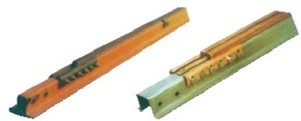
| Modell | Code | Querschnitt mm² | Nennstrom A | Widerstand Ω/km | Impedanz Ω/km | Stützhalterung |
| SJGP-85/400 | 0851101 | 85 | 400 | 0,2118 | 0,2896 | 20×40×60 |
| SJGP-110/500 | 0851102 | 110 | 500 | 0,1636 | 0,2545 | |
| SJGP-170/630 | 0851103 | 170 | 630 | 0,1059 | 0,2098 | |
| SJGP-240/800 | 0851104 | 240 | 800 | 0,0750 | 0,1888 | |
| SJGP-320/1000 | 0851105 | 320 | 1000 | 0,0563 | 0,1730 | 30×50×80 |
| SJGP-420/1250 | 0851106 | 420 | 1250 | 0,0429 | 0,1653 | |
| SJGP-550/1600 | 0851107 | 550 | 1600 | 0,0327 | 0,1541 | |
| SJGP-700/2000 | 0851108 | 700 | 2000 | 0,0257 | 0,1424 | |
| SJGP-170I/1250 | 0851109 | 340 | 1250 | 0,0529 | 0,1533 | 54×50×80 |
| SJGP-240I/1600 | 0851110 | 480 | 1600 | 0,0375 | 0,1451 | |
| SJGP-320Ⅱ/2000 | 0851111 | 640 | 2000 | 0,0282 | 0,1347 | |
| SJGP-420Ⅱ/2500 | 0851112 | 840 | 2500 | 0,0215 | 0,1286 | |
| SJGP-550Ⅱ/3150 | 0851113 | 1100 | 3150 | 0,0164 | 0,1068 | |
| SJGP-700Ⅱ/4000 | 0851114 | 1400 | 1400 | 0,0129 | 0,1060 |
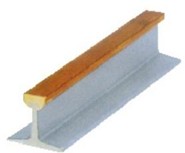
| Modell | Code | Querschnitt mm² | Nennstrom A | Widerstand Ω/km | Impedanz Ω/km | Stützhalterung |
| SJGF-85/400 | 0850100 | 85 | 400 | 0,2118 | 0,2896 | 30×35 |
| SJHGF-100/500 | 0852101 | 100 | 500 | 0,180 | 0,2594 | |
| SJGF-150/630 | 0852102 | 150 | 630 | 0,120 | 0,2198 | |
| SJGF-200/800 | 0852103 | 200 | 800 | 0,090 | 0,1957 | 35×45 |
| SJGF-300/1000 | 0852104 | 300 | 1000 | 0,060 | 0,1741 | |
| SJGF-400/1250 | 0852105 | 400 | 1250 | 0,045 | 0,1640 | |
| SJGF-500/1600 | 0852106 | 500 | 1600 | 0,036 | 0,1556 | 40×50 |
| SJGF-650/2000 | 0852107 | 650 | 2000 | 0,028 | 0,1466 | |
| SJGF-800/2500 | 0852108 | 800 | 2500 | 0,023 | 0,1416 | |
| SJGF-1000/3150 | 0852109 | 1000 | 3150 | 0,018 | 0,1261 | |
| SJGF-1200/3500 | 0852110 | 1200 | 3500 | 0,015 | 0,1173 | 40×58 |
| SJGF-1400/4000 | 0852111 | 1400 | 4000 | 0,013 | 0,1112 |
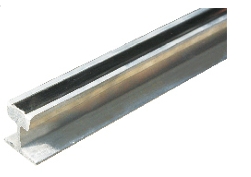
| Modell | Code | Querschnitt mm² | Nennstrom A | Widerstand Ω/km | Impedanz Ω/km | Schienenmaß der Aluminiumhalterung |
| SJGL-198/320 | 0853100 | 198 | 320 | 0,1333 | 0,1362 | 18×36 |
| SJHGL-320/500 | 0853101 | 320 | 500 | 0,0952 | 0,1455 | 24×36 |
| SJGL-400/700 | 0853102 | 400 | 700 | 0,0609 | 0,1258 | 32×36 |
| SJGL-700/1000 | 0853103 | 700 | 1000 | 0,0435 | 0,1184 | 29×46 |
| SJGL-1200/1600 | 0853104 | 1200 | 1600 | 0,0254 | 0,0904 | 44×56 |
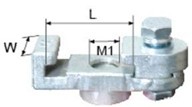
| Modell | Code | Dimension | ||
| L | M1 | IN | ||
| GD-35 | 0852201 | 36 | 12 | 30 |
| GD-45 | 0852202 | 47 | 16 | 40 |
| GD-50 | 0852203 | 52 | 16 | 40 |
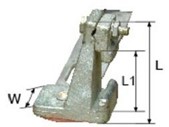
| Modell | Code | Dimension | ||
| L | L1 | IN | ||
| DG I-35 | 0852204 | 36 | 69 | 40 |
| DG I-45 | 0852205 | 47 | 90 | 45 |
| DG I-50 | 0852206 | 52 | 90 | 45 |
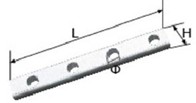
| Modell | Code | Dimension | ||
| L | F | IN | ||
| LBF-100 | 0852301 | 190 | 11 | 31 |
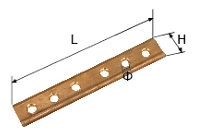
| Modell | Code | Dimension | ||
| 0,1541 | SJGQ-700/2000 | 0,0210 | ||
| 0,1421 | 0852302 | 90 | 5 Kollektor (Einzel-, Doppelbürsten) | 24 |
| Modell | 0852303 | 210 | 11 | 31 |
| Code | 0852304 | 210 | 11 | 35 |
| Dimension | 0852305 | 210 | 11 | 38 |
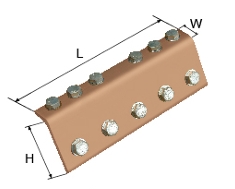
| IN | SJG-A/3750×2 | Modell | ||
| Code | Dimension | L | ||
| H | 0852511 | 200 | 80 | 20 |
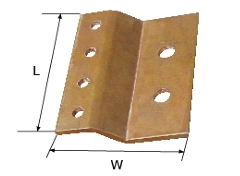
| IN | SJG-B/3750×2 | 4 Einbauzeichnung | |
| Schleifleitungen mit Stahlgehäuse (auch als starre Schleifleitungen oder leitfähige Schienen mit Stahlgehäuse bekannt) sind leitfähige Systeme zur Stromversorgung mobiler Geräte wie Kräne, elektrische Hebezeuge, Förderbänder usw. Im Vergleich zu herkömmlichen Kabeln oder flexiblen Schleifleitungen bieten Schleifleitungen aus Stahl folgende Vorteile: | Die Schleifkontaktleitung des Stahlkörpers weist eine hohe elektrische Leitfähigkeit auf | ||
| Als Leiter wird üblicherweise Kupfer oder eine Kupfer-Aluminium-Legierung verwendet, die eine hohe elektrische Leitfähigkeit und einen geringen Leistungsverlust aufweist und sich daher für die Übertragung hoher Ströme (bis zu mehreren tausend Ampere) eignet. | 0852512 | 90 | 88 |
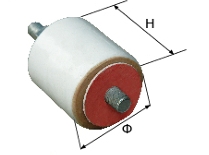
| 2. Die Gleitkontaktlinie des Stahlkörpers weist eine hohe mechanische Festigkeit auf | Das starre Strukturdesign gewährleistet eine hohe Stoß- und Vibrationsfestigkeit und neigt nicht zu Verformungen oder Brüchen. | Es ist für raue Industrieumgebungen geeignet (z. B. hohe Temperaturen, hohe Luftfeuchtigkeit, Staub usw.). | |
| 3. Die Schleifkontaktleitung aus Stahl hat eine lange Lebensdauer und einen geringen Wartungsaufwand | Es weist eine gute Verschleißfestigkeit auf. Der Kollektor (Bürste) und die Schleifkontaktleitung haben einen stabilen Kontakt, mit geringerem Verschleiß und einer langen Lebensdauer. | ||
| · Es ist kein häufiger Austausch oder keine häufige Anpassung erforderlich und die Wartungskosten sind niedrig. | 0852611 | 80 | 74 |
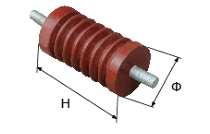
| 4. Die Gleitkontaktleitung aus Stahl ist einfach zu installieren und hat eine stabile Struktur | Modularer Aufbau, einfache Installation und horizontale oder vertikale Anordnung möglich. | Die Halterung ist fest angebracht und wackelt nicht, wodurch die Stabilität der Stromversorgung gewährleistet wird. | |
| 5. Stahlkörper-Schleifkontaktlinien haben eine starke Anpassungsfähigkeit | Es kann in verschiedenen Innen- und Außenumgebungen verwendet werden und ist korrosionsbeständig (einige Modelle sind aus Edelstahl gefertigt oder verfügen über eine Korrosionsschutzbeschichtung). | ||
| Es eignet sich für Hochgeschwindigkeits- und Schwerlastgeräte (wie Hafenkräne und automatisierte Produktionslinien). | 0852612 | 130 | 70 |
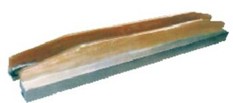
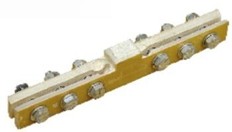
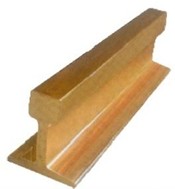
| Das Material ist recycelbar und weist eine gute Umweltverträglichkeit auf. | 8. Die Schleifkontaktlinie des Stahlkörpers kann flexibel angepasst werden | Länge, Stromkapazität (z. B. 100 A bis 5000 A) und Spannungsniveau (üblicherweise AC 380 V bis 1000 V) können je nach Bedarf angepasst werden. Hinweise: | Um eine Beeinträchtigung der elektrischen Leitfähigkeit durch Staubablagerungen zu vermeiden, ist eine regelmäßige Kontrolle des Abriebs des Stromabnehmers und der Sauberkeit der Schleifleitung erforderlich. | Zusammenfassend lässt sich sagen, dass sich Stahlschleifleitungen aufgrund ihrer hohen Zuverlässigkeit, Langlebigkeit und effizienten Stromversorgung zur bevorzugten Lösung für die mobile Stromversorgung in der Schwerindustrie entwickelt haben. Starre Schleifleitungen sind eine Art Kraftübertragungsvorrichtung, die in mobilen Geräten wie Kränen und Brückenkränen verwendet wird und die folgenden wesentlichen Vorteile bietet: | 1. Die starre Körper-Schleifkontaktlinie hat eine solide und langlebige Struktur mit starker Tragfähigkeit · Starre Struktur: Kupfer- oder Aluminiumstäbe dienen als leitfähiger Hauptkörper, die Außenseite ist durch eine hochfeste Aluminiumlegierung oder Edelstahlhülle geschützt. Die Gesamtstruktur ist hochsteif, stoß- und vibrationsfest und kann sich an häufige Bewegungen und raue Arbeitsbedingungen in Schwerindustrieumgebungen (wie hohe Temperaturen, Staub, korrosive Gase usw.) anpassen. |
| Stabile Hochstromübertragung: Der Leiter hat einen großen Querschnitt (bis zu mehreren hundert Quadratmillimeter) und hält Strömen von bis zu mehreren tausend Ampere stand. Er zeichnet sich durch hohe Stromübertragungsstabilität aus und verursacht weniger Probleme wie Überhitzung oder Stromausfälle aufgrund von Stromüberlastung oder schlechtem Kontakt. Er eignet sich für die Stromversorgungsanforderungen von Hochleistungsgeräten. | 0854101 | 800 | 2500 | Zweitens ist die starre Schleifleitung sicher und zuverlässig und bietet eine hervorragende Schutzleistung | Geschlossenes Schutzdesign: Die leitfähige Sammelschiene ist vollständig im Gehäuse eingeschlossen und somit vor direkter Einwirkung der äußeren Umgebung geschützt. Dies verhindert das Eindringen von Verunreinigungen wie Staub, Wasserdampf und Ölflecken und reduziert so das Risiko von Kurzschlüssen. Gleichzeitig wird die Möglichkeit des Kontakts von Personen mit dem leitfähigen Körper minimiert, was die Betriebssicherheit erhöht. |
| · Hervorragende Isolationsleistung: Das Gehäuse besteht aus isolierenden Materialien (wie Epoxidharz, hochfestem Kunststoff usw.). Zwischen dem Innenleiter und dem Gehäuse befindet sich eine zuverlässige Isolierschicht mit hohem Isolationsgrad. Dies kann Unfälle durch Stromlecks wirksam verhindern und eignet sich besonders für Industrieumgebungen mit hoher Luftfeuchtigkeit, Staub oder korrosiven Medien. | 0854102 | 1000 | 3150 | · Hohe Lichtbogenbeständigkeit: Die Leiteroberfläche ist glatt, der Kontakt ist eng und die Verbindungspunkte sind mit speziellen Verfahren (wie Verzinnen oder Verzinnung) behandelt, wodurch die Entstehung von Lichtbögen verringert, die Lebensdauer verlängert und die Brandgefahr gesenkt werden kann. | Drittens ist die starre Schleifkontaktleitung einfach zu installieren und zu warten und verfügt über eine starke Anpassungsfähigkeit |
| Modulare Installation: Das segmentierte modulare Design lässt sich flexibel an die Laufschienenlänge des Geräts anpassen. Die Installation ist einfach und schnell, ohne dass komplexe Vor-Ort-Arbeiten erforderlich sind. Verschiedene Installationsmethoden wie horizontal, vertikal und gebogen werden unterstützt, um den Layoutanforderungen verschiedener Geräte gerecht zu werden. | 0854103 | 1200 | 3500 | · Geringe Wartungskosten: Die starre Struktur neigt nicht zu Verformungen, der Leiter verschleißt weniger und der tägliche Wartungsaufwand ist gering. Es ist lediglich notwendig, regelmäßig die Dichtheit der Verbindungspunkte und die Unversehrtheit des Gehäuses zu überprüfen. Der häufige Austausch von Teilen entfällt, was Wartungskosten und Ausfallzeiten reduziert. | · Breite Anpassungsfähigkeit an Umgebungsbedingungen: Es kann stabil in einem breiten Temperaturbereich von -30 °C bis +120 °C betrieben werden und weist eine ausgezeichnete Beständigkeit gegen hohe und niedrige Temperaturen auf. Gleichzeitig ist es alterungsbeständig und beständig gegen UV-Strahlung und eignet sich daher für den Einsatz im Freien, in Werkstätten mit hohen Temperaturen und anderen speziellen Umgebungen. |
| Viertens hat die starre Schleifkontaktleitung eine ausgezeichnete elektrische Leitfähigkeit und einen geringen Energieverlust | 0854104 | 1400 | 4000 | · Leiter mit hoher Leitfähigkeit: Durch die Verwendung von Rotkupfer oder hochreinem Aluminium als Leiter weisen sie eine hohe Leitfähigkeit (Kupferleitfähigkeit ≥ 100 % IACS, Aluminiumleitfähigkeit ≥ 61 % IACS), einen geringen Widerstand und einen geringen Energieverlust bei der Stromübertragung auf, was die Betriebseffizienz der Geräte verbessern und die Energieverbrauchskosten senken kann. | · Hohe Kontaktzuverlässigkeit: Der Kollektor (Empfänger) steht in engem Kontakt mit dem Schleifleitungsleiter. Federdruck oder Rollkontakt gewährleisten eine gute elektrische Kontinuität auch bei Hochgeschwindigkeitsbewegungen oder Vibrationen des Geräts. So werden Stromausfälle oder elektrische Funkenbildung durch schlechten Kontakt vermieden. |
| Fünf starre Schleifkontaktleitungen haben eine lange Lebensdauer und ein hohes Gesamtkosten-Leistungsverhältnis | 0854105 | 1800 | 5000 | Verschleißfest und korrosionsbeständig: Die Oberfläche des Leiters kann durch Vernickeln und Versilbern hinsichtlich Verschleißfestigkeit und Korrosionsbeständigkeit weiter verbessert werden. Das Gehäuse besteht aus korrosionsbeständigen Materialien (wie Edelstahl oder Aluminiumlegierung mit anodischer Oxidationsbehandlung). Die Gesamtlebensdauer kann über 10 Jahre betragen und ist damit deutlich länger als bei herkömmlichen flexiblen Schleifleitungen oder Kabelstromversorgungssystemen. | · Umfassender Kostenvorteil: Obwohl die anfänglichen Investitionskosten etwas höher sind als bei manchen flexiblen Schleifkontaktleitungen, sind die Gesamtkosten bei langfristiger Nutzung (einschließlich Wartung, Austausch, Energieverbrauch usw.) aufgrund der langen Lebensdauer, des geringen Wartungsaufwands und der hohen Zuverlässigkeit niedriger, sodass sich das Produkt besonders für große Industrieanlagen oder Szenarien eignet, die einen Dauerbetrieb über einen langen Zeitraum erfordern. |
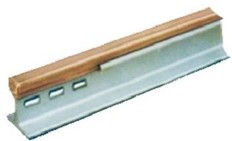
| · | Die anwendbaren Szenarien starrer Schleifkontaktleitungen | Starre Schleifleitungen werden häufig in Stromversorgungssystemen mobiler Geräte wie Kränen, Brückenkränen, elektrischen Hebezeugen und automatisierten Produktionslinien in Branchen wie Metallurgie, Bergbau, Maschinenbau, Lagerhaltung und Logistik sowie Hafenterminals eingesetzt. Sie eignen sich besonders für Schwerindustrieszenarien mit hohen Anforderungen an Zuverlässigkeit, Sicherheit und Tragfähigkeit. mm² | Rated Current A | Resistance Ω/km | Impedance Ω/km | Support Bracket |
| SJGQ-85/100 | 0855101 | 85 | 400 | 0.2118 | 0.2896 | 30×40 |
| SJGQ-110/500 | 0855102 | 110 | 500 | 0.1636 | 0.2545 | |
| SJGQ-170/630 | 0855103 | 170 | 630 | 0.1059 | 0.2098 | |
| SJGQ-240/800 | 0855104 | 240 | 800 | 0.0750 | 0.1888 | |
| SJGQ-320/1000 | 0855105 | 320 | 1000 | 0.0563 | 0.1730 | 40×45 |
| SJGQ-420/1250 | 0855106 | 420 | 1250 | 0.0429 | 0.1653 | |
| SJGQ-550/1600 | 0855107 | 550 | 1600 | 0.0327 | 0.1541 | |
| SJGQ-700/2000 | 0855108 | 700 | 2000 | 0.0210 | 0.1421 |
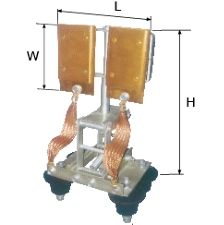
| Model | Code | Dimension | ||
| L | H | W | ||
| SJG-A/3750×2 | 0856101 | 250 | 500 | 150 |
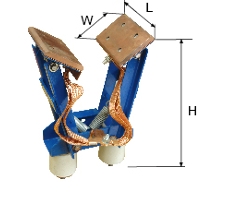
| Model | Code | Dimension | ||
| L | H | W | ||
| SJG-B/3750×2 | 0856102 | 150 | 450 | 100 |
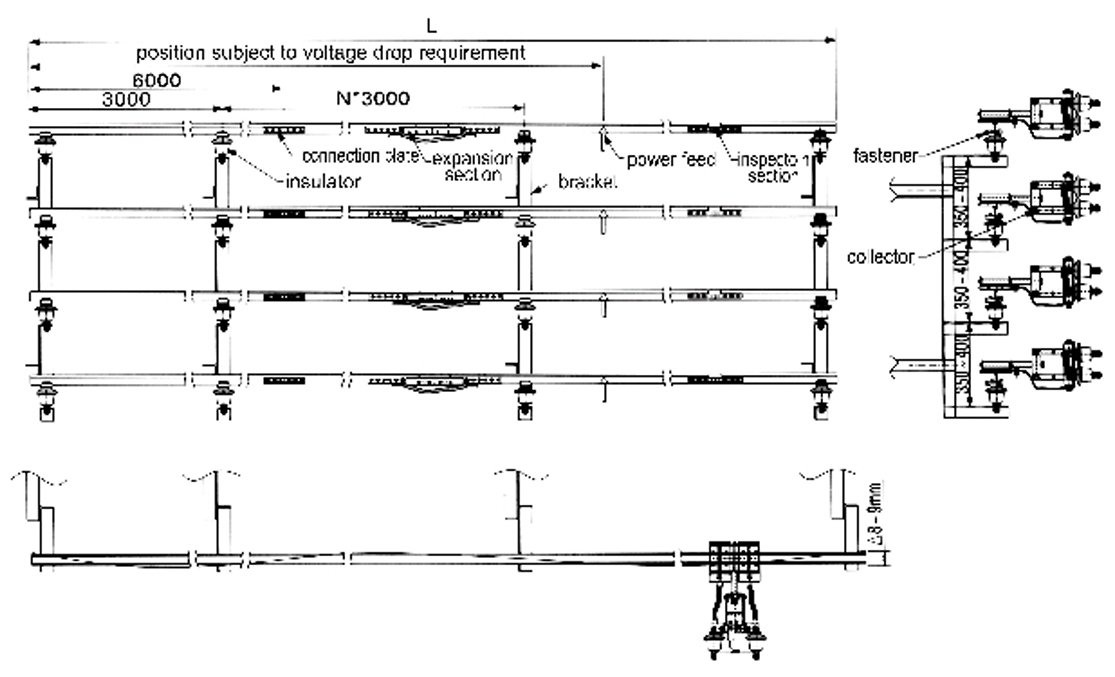
Steel body sliding contact lines (also known as rigid sliding contact lines or steel body conductive rails) are conductive systems used to supply power to mobile equipment such as cranes, electric hoists, conveyors, etc. Compared with traditional cables or flexible sliding contact lines, steel sliding contact lines have the following advantages:
The steel body sliding contact line has high electrical conductivity
Copper or copper-aluminum alloy is usually used as the conductor, which has a high electrical conductivity and low power loss, making it suitable for high-current transmission (up to several thousand amperes).
Low resistance, reduced heat generation, and improved energy efficiency.
2. The steel body sliding contact line has high mechanical strength
The rigid structure design ensures strong resistance to impact and vibration, and is not prone to deformation or breakage.
It is suitable for harsh industrial environments (such as high-temperature, high-humidity, and dusty occasions, etc.).
3. The steel body sliding contact line has a long service life and low maintenance
It has good wear resistance. The collector (brush) and the sliding contact line have stable contact, with less wear and a long service life.
· No frequent replacement or adjustment is required, and the maintenance cost is low.
4. The steel body sliding contact line is easy to install and has a stable structure
Modular design, simple installation, and can be arranged horizontally or vertically.
The bracket is firmly fixed and not prone to shaking, ensuring the stability of power supply.
5. Steel body sliding contact lines have strong adaptability
It can be used in various indoor and outdoor environments and is corrosion-resistant (some models are made of stainless steel or have anti-corrosion coatings).
It is suitable for high-speed and heavy-duty equipment (such as port cranes and automated production lines).
6. The steel body sliding contact line has high safety
The casing is usually made of insulating materials (such as PVC or engineering plastics), with a high protection grade (IP23 or above), and is resistant to electric shock, dust and water.
· No exposed wires, reducing the risk of short circuits.
7. Steel body sliding contact lines are energy-saving and environmentally friendly
The low-impedance design reduces power waste and meets the requirements of green energy.
The material is recyclable and has good environmental friendliness.
8. The steel body sliding contact line can be customized flexibly
The length, current capacity (such as 100A to 5000A) and voltage level (commonly AC 380V to 1000V) can be customized according to requirements.
Notes:
It is necessary to regularly check the wear of the collector and the cleanliness of the sliding contact line to avoid dust accumulation affecting the electrical conductivity.
In conclusion, steel sliding contact lines have become the preferred solution for mobile power supply in heavy industry due to their high reliability, durability and efficient power supply.
Rigid sliding contact lines are a type of power transmission device used in mobile equipment such as cranes and overhead cranes, and they have the following significant advantages:
1. The rigid body sliding contact line has a solid and durable structure with strong load-bearing capacity
· Rigid structure design: Copper or aluminum bars are used as the conductive main body, and the exterior is protected by a high-strength aluminum alloy or stainless steel shell. The overall structure is highly rigid, with excellent impact and vibration resistance, and can adapt to frequent movement and harsh working conditions in heavy industrial environments (such as high temperatures, dust, corrosive gases, etc.).
· Stable high current transmission: The conductor has a large cross-sectional area (up to several hundred square millimeters), capable of withstanding currents of up to several thousand amperes. It features strong power transmission stability and is less likely to cause issues such as overheating or power outages due to current overload or poor contact. It is suitable for the power supply requirements of high-power equipment.
Second, the rigid sliding contact line is safe and reliable with excellent protective performance
· Closed protection design: The conductive busbar is completely enclosed within the casing, avoiding direct exposure to the external environment. It can prevent impurities such as dust, water vapor, and oil stains from entering, reducing the risk of short circuits. At the same time, it minimizes the possibility of personnel coming into contact with the conductive body, enhancing operational safety.
· Excellent insulation performance: The casing is made of insulating materials (such as epoxy resin, high-strength plastic, etc.), and there is a reliable insulating layer between the internal conductor and the casing, with a high insulation grade. This can effectively prevent electric leakage accidents and is especially suitable for industrial environments with high humidity, dust or corrosive media.
· Strong arc resistance: The conductor surface is smooth, the contact is tight, and the connection points are treated with special processes (such as tin plating or tin plating), which can reduce the generation of arcs, extend the service life, and lower the risk of fire.
Third, the rigid sliding contact line is easy to install and maintain, and has strong adaptability
· Modular installation: It adopts a segmented modular design, which can be flexibly combined according to the length of the equipment's running track. The installation process is simple and fast, without the need for complex on-site processing. It also supports various installation methods such as horizontal, vertical, and curved, meeting the layout requirements of different equipment.
· Low maintenance cost: The rigid structure is not prone to deformation, the conductor wears less, and the daily maintenance workload is small. It is only necessary to regularly check the tightness of the connection points and the integrity of the casing. There is no need to frequently replace parts, which reduces maintenance costs and downtime.
· Wide environmental adaptability: It can operate stably within a wide temperature range of -30 ℃ to +120℃, with excellent resistance to high and low temperatures. At the same time, it is resistant to aging and ultraviolet rays, making it suitable for outdoor open-air environments or high-temperature workshops and other special environments.
Fourth, the rigid sliding contact line has excellent electrical conductivity and low energy loss
· High-conductivity conductors: Using red copper or high-purity aluminum as conductors, they have high conductivity (copper conductivity ≥100% IACS, aluminum conductivity ≥61% IACS), low resistance, and low energy loss during power transmission, which can improve the operational efficiency of equipment and reduce energy consumption costs.
· High contact reliability: The collector (receiver) is in close contact with the sliding contact line conductor. It adopts spring pressure or rolling contact methods to ensure good electrical continuity even under high-speed movement or vibration conditions of the equipment, avoiding power failure or electric spark problems caused by poor contact.
Five, rigid sliding contact lines have a long service life and high comprehensive cost performance
· Wear-resistant and corrosion-resistant: The surface of the conductor can be further enhanced in terms of wear resistance and corrosion resistance through processes such as nickel plating and silver plating. The casing is made of corrosion-resistant materials (such as stainless steel or aluminum alloy with anodic oxidation treatment), and the overall service life can reach over 10 years, which is much longer than that of ordinary flexible sliding contact lines or cable power supply systems.
· Comprehensive cost advantage: Although the initial investment cost is slightly higher than that of some flexible sliding contact lines, due to its long service life, low maintenance and high reliability, the comprehensive cost during long-term use (including maintenance, replacement, energy consumption, etc.) is lower, making it particularly suitable for large industrial equipment or scenarios that require continuous operation for a long time.
Vi. Other Advantages of Rigid Sliding contact Lines
· Flexible and aesthetically pleasing layout: It can be customized according to the factory structure or the operation trajectory of the equipment, installed above or on the side of the equipment, without occupying ground space, making the workshop layout neater and more beautiful.
· Supports high-speed movement: With low sliding contact resistance, it can adapt to the high-speed operation of equipment (up to over 100 meters per minute), meeting the modern industrial demand for efficient production.
·
The applicable scenarios of rigid sliding contact lines
Rigid sliding contact lines are widely used in the power supply systems of mobile equipment such as cranes, overhead cranes, electric hoists, and automated production lines in industries like metallurgy, mining, mechanical manufacturing, warehousing and logistics, and port terminals. They are particularly suitable for heavy industrial scenarios with high requirements for reliability, safety, and load-bearing capacity.












